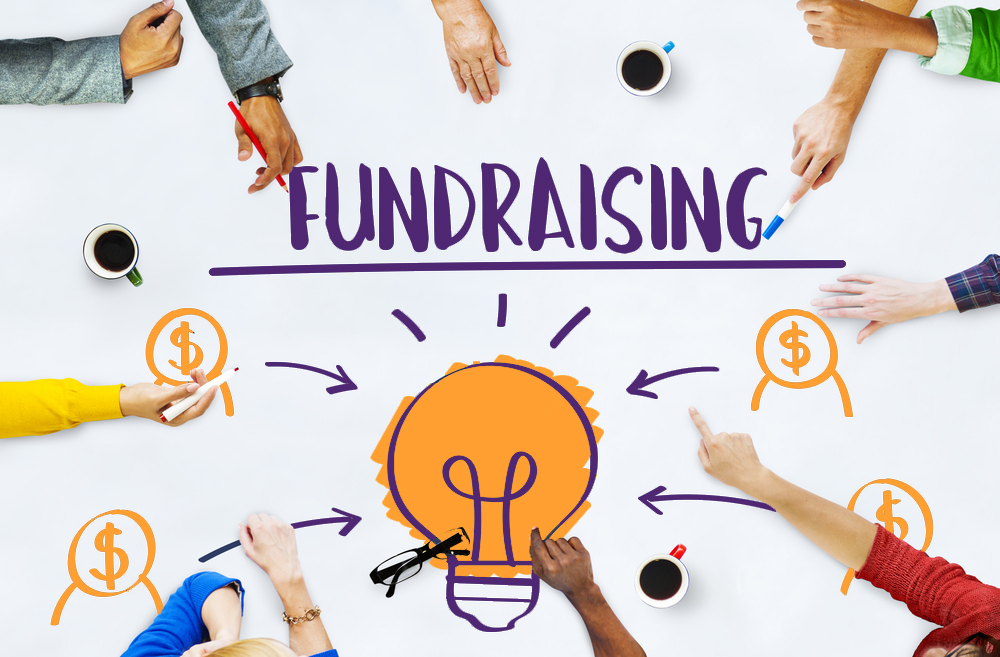Understanding the Necessary Parts of Nonprofit Fundraising: Key Practices for Enhancing Monetary Sustainability
Not-for-profit fundraising is a complex endeavor that needs a nuanced understanding of numerous important elements to ensure economic sustainability. From strategic planning that lines up with mission-driven objectives to the cultivation of significant benefactor relationships, each element plays a critical duty in the total success of fundraising efforts.
Strategic Fundraising Planning
Strategic fundraising preparation is an important part for any type of nonprofit organization aiming to accomplish its objective efficiently. This process entails setting clear, measurable goals that line up with the company's total purposes while thinking about the one-of-a-kind demands of the neighborhood it offers. A well-structured fundraising strategy not just recognizes prospective profits sources however also outlines the techniques and techniques required to engage those resources.

In addition, leveraging data analytics can notify decision-making by supplying insights right into contributor habits and patterns, allowing nonprofits to tailor their fundraising strategies as necessary. Regular testimonials and updates of the fundraising strategy are vital to react to transforming circumstances and arising opportunities. Inevitably, a comprehensive strategic fundraising plan works as a roadmap for nonprofits, fostering financial stability and enabling them to accomplish their objective properly.
Structure Benefactor Relationships
Building solid donor partnerships is crucial for the long-term sustainability of any type of not-for-profit organization. These connections are the structure upon which effective fundraising efforts are built, as they promote trust, commitment, and involvement among advocates. Nonprofits have to prioritize growing meaningful links with their donors, recognizing that each interaction can substantially influence their willingness to contribute.
To effectively construct donor relationships, companies should concentrate on individualized interaction techniques. This includes comprehending the interests, motivations, and offering patterns of private benefactors, enabling customized communication that reverberates with them. Routine updates on business progression, program outcomes, and the impact of payments enhance the value of their assistance.
In addition, revealing gratefulness is important. Recognizing contributions without delay and regards not just improves partnerships but also motivates continuous assistance. Occasions such as contributor gratitude events offer chances for personal links and neighborhood building.
Eventually, supporting contributor relationships goes beyond transactional interactions; it symbolizes a collaboration where donors really feel valued and important to the goal. By investing time and resources in relationship-building, nonprofits can boost contributor retention, boost lifetime giving, and make certain financial stability for their initiatives.
Reliable Communication Methods
Reliable interaction strategies play a crucial duty in reinforcing the solid benefactor partnerships that nonprofits strive to grow. Clear and constant messaging is necessary for conveying the objective, vision, and impact of the organization. Expressing the unique value recommendation assists donors comprehend how their payments make a tangible distinction.
Using numerous interaction channels-- such as e-mails, social media, e-newsletters, and in-person events-- makes sure that messages reach a diverse audience - nonprofit agency. Customizing interaction to different benefactor sections can improve involvement; as an example, significant donors might appreciate comprehensive records on financing allotments, while smaller benefactors may like concise updates highlighting crucial success
Storytelling is one more effective device in nonprofit communication. her explanation Sharing compelling stories concerning recipients can evoke emotional reactions and foster a deeper connection with the reason. Openness regarding financials and program end results develops trust, motivating benefactors to stay engaged gradually.
Engaging the Community
Community involvement is necessary for nonprofits looking for to intensify their influence and foster a sense of ownership among neighborhood stakeholders. Developing a robust connection with the neighborhood not just improves visibility yet additionally constructs count on, critical for sustainable fundraising initiatives. By actively entailing neighborhood participants in decision-making procedures, nonprofits can align their missions with the needs and desires of the population they serve.
To successfully engage the community, nonprofits must focus on transparency and open communication. Hosting public online forums, workshops, and informative sessions permits purposeful dialogue, where stakeholders can articulate their opinions and add to the company's vision. Furthermore, teaming up with regional businesses, institutions, and public companies can produce collaborating collaborations that leverage shared resources webpage for better effect.
One more important element of neighborhood interaction is acknowledging and commemorating local payments. Acknowledging benefactors, supporters, and volunteers cultivates a feeling of belonging and commitment, motivating ongoing participation. Additionally, showcasing success tales and the substantial advantages of area assistance can motivate others to add.
Eventually, aggressive area interaction cultivates a network of supporters that are spent in the not-for-profit's goal, ensuring enduring assistance and improved monetary sustainability.
Making Use Of Technology and Tools

One necessary tool for nonprofits is an extensive benefactor management system. These platforms allow companies to maintain thorough documents of contributor communications, choices, and payments, facilitating individualized communication and interaction (nonprofit agency). Moreover, utilizing online fundraising platforms permits nonprofits to reach a more comprehensive audience, making it simpler for supporters to add via various channels, including social media sites and e-mail campaigns
In addition, making use of project management devices can help improve internal procedures, making certain that fundraising groups stay organized and concentrated on their objectives. Automation software application can likewise streamline repeated tasks, such as sending out thank-you emails or reminders, freeing up personnel time for this article more strategic campaigns.
Conclusion
In verdict, the crucial elements of not-for-profit fundraising include strategic preparation, solid benefactor partnerships, reliable interaction, community engagement, and the use of innovation. These components collectively contribute to improving monetary sustainability and resilience within nonprofit organizations.
Furthermore, leveraging information analytics can notify decision-making by providing insights into contributor habits and fads, allowing nonprofits to tailor their fundraising methods as necessary.Building solid donor partnerships is necessary for the long-term sustainability of any kind of not-for-profit organization.Efficient communication techniques play an essential function in strengthening the strong contributor connections that nonprofits make every effort to cultivate.One essential device for nonprofits is a detailed benefactor management system.In final thought, the necessary parts of not-for-profit fundraising include calculated planning, strong contributor relationships, effective interaction, area involvement, and the utilization of innovation.